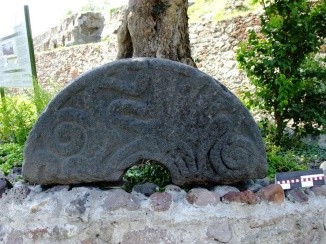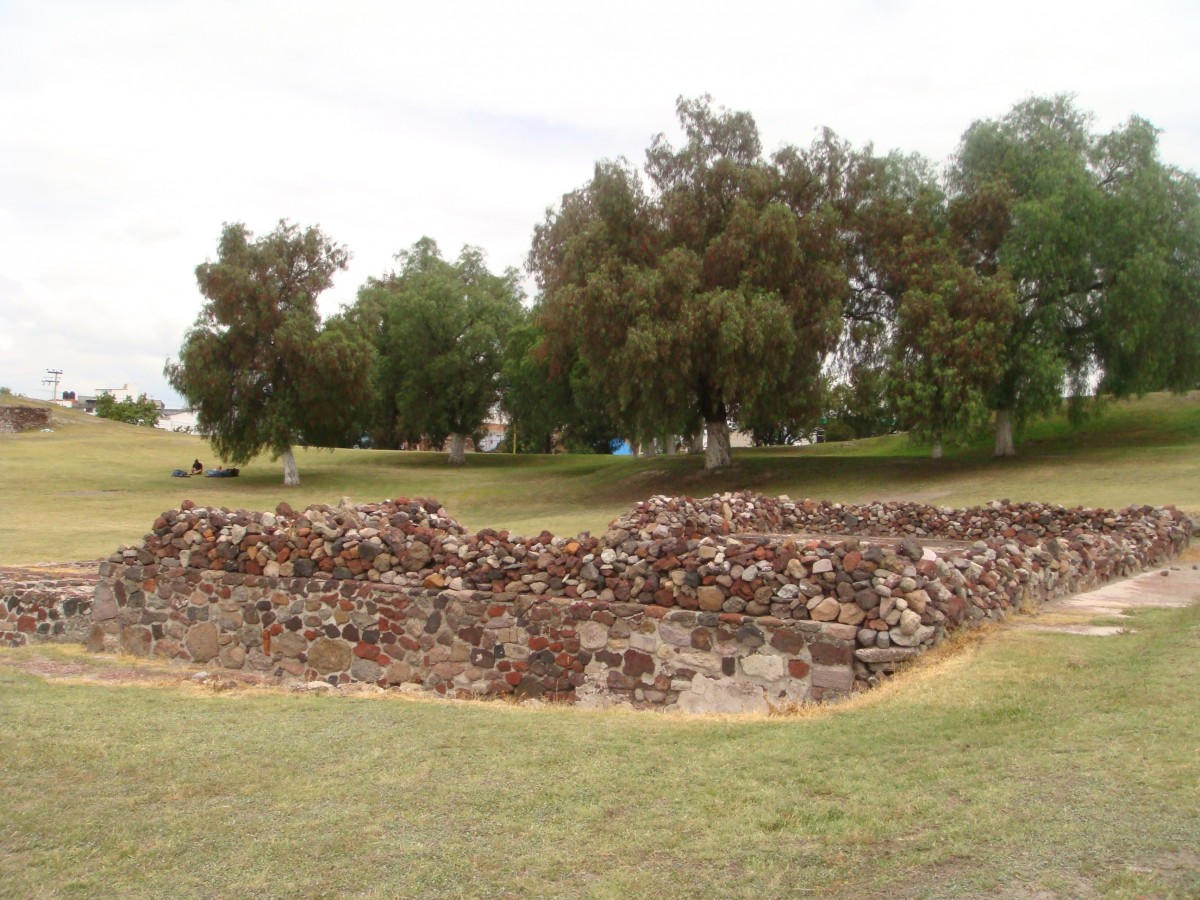Several sculptures have been found in the Los Melones archeological zone, the highlight of which are two Mesoamerican ballgame rings. We should first take a moment to analyze the role of the ballgame to Mesoamerican culture, as evidence of rubber balls dating back to 1600 BC has been found on the Gulf coast, while architectural remains dating back to between 1400 and 1250 BC have been found in Chiapas.
Archeological and ethnographic evidence can be found throughout Mesoamerica in different forms. Courts for the ballgame had different shapes, as we can see depicted in certain mural paintings (e.g. those of Tepantitla and Teotihuacan), as well as in codices. Chief among these are the codices of Selden, Nuttall and, above all, Xólotl, which portrays Nezahualcóyotl playing the game. There are also illustrations accompanying the works of chroniclers and certain monolithic sculptures, such as that of San Miguel Ixtapan in the State of Mexico, or those carved in the panels of El Tajín, together with decorated pottery beakers and sculptures, such as those of Colima, which show the game and its players.
Fray Bernardino de Sahagún tells us: “...the ballgame was called tlaxtli or tlachtli, the court for which consisted of two walls twenty or thirty feet apart, forty or fifty feet long and about three yards high. Both walls and ground were painted very white. A line was drawn for the purpose of the game in the middle of the court. There were two stones like millstones, pierced in the middle, halfway up the walls in the middle of the court. These faced each other and the corresponding holes were wide enough that the ball could pass through each.”
It is possible to find up to 18 variants of ballgame court, from different floor plans and two parallel constructions to whether they were open or closed, or included end sections or not.
In the case of Los Melones, the first ring (which is smaller than the other one) incorporates a flange and circular perforation. It is carved on both sides, and the top shows the head of a person who appears to be wearing a helmet. This ring probably comes from Huexotla.
The second ring is also carved on both sides. It depicts someone dressed as a player who is kneeling around the hole in the middle. This was found near the river in the neighborhood of La Trinidad in Texcoco.










